There are only a few more minutes left until midnight here, so I’ll jump right back into my Top Ten countdown before 2011 expires. Picking up where I stopped yesterday …
5. Pacific Partnership 2011
Inspired in part by the 2004 Indian Ocean tsunami, Pacific Partnership is an annual humanitarian mission led by the US Navy’s Pacific Fleet, intended to ensure that the United States and its friends and allies are better coordinated to respond to future disasters in the Pacific region.
At numerous stops along its route, Pacific Partnership trains local forces in disaster relief, works with local and international relief organizations on emergency response plans, and provides medical care and construction aid to local communities. The past five missions have served more than 300,000 patients in 13 countries and engaged in 130 engineering projects.

HMNZS Canterbury and support craft, photographed from USS Cleveland.
In May, Royal New Zealand Navy ship HMNZS Canterbury met USS Cleveland in Tonga and then participated in a month of Pacific Partnership humanitarian activities in Vanuatu. That was the first time in more than 25 years that American and Kiwi naval ships operated together. US Commodore Jesse Wilson actually transferred his command from USS Cleveland to HMNZS Canterbury for the month, marking the first time in history that an American naval exercise was led from the bridge of a Kiwi ship.
Although largely overlooked in the press, Pacific Partnership 2011 was dramatic evidence of both the accelerating positive momentum in the US-NZ bilateral relationship and the benefits that such collaboration can produce for our mutual neighbors in the Pacific region. There was perhaps no better example this past year of the Wellington Declaration in action.
4. Embassy Restructuring
Perhaps the most impactful effort by our team in 2011 was the restructuring of the way in which our Embassies in New Zealand and Samoa do business. We reorganized staff positions, shut down legacy programs that did not fit current needs and circumstances, created new portfolios, launched new projects, articulated a more focused and active strategy, and set higher standards for performance and outcomes.
All of that can be disconcerting, particularly after years of relatively stable activity. And, of course, change of any sort can be difficult to engineer within government entities. I have been greatly impressed, though, with the flexible and enthusiastic manner in which most of the team in Wellington, Auckland, and Apia have embraced the more kinetic, purpose-built, results-oriented approach to our mission.
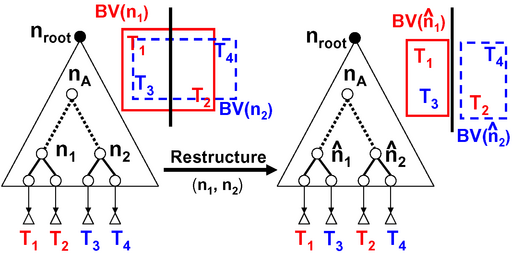
Without that heavy internal lifting, we could not have pursued very much of the external engagement that you’ve seen from us this past year. Without the re-engineering, several of the other items on the Top Ten list simply would not have been conceived, attempted, or even considered possible. A few of the remaining items would have been reactive rather than active, thus significantly reducing their impact.
Because of the tremendous long-term value of retooling operations and aligning resources and strategy with current realities, this is the project to which I devoted the bulk of my own time in 2011. It was certainly time well spent … an investment that will continue to pay dividends for decades. In fact, but for the three special events discussed below, our Mission restructuring would have hit the top spot on this list.
3. Rugby World Cup
It’s difficult to talk briefly about this one. The riotous pageant known as the Rugby World Cup (RWC) consumed the country for more than a month, not counting the year of intense preparations before the opening match. Our Mission’s RWC program had hundreds of moving parts, including very special participation by headliners such as the USA Eagles and the US Marine Corps Forces Pacific Band.
The tournament lands in the upper reaches of my Top Ten list because it presented an unprecedented opportunity –enthusiastically and successfully converted by my colleagues — to reinvigorate old relationships, build new ones, demonstrate shared values and interests, and celebrate our two countries’ love of sport. We hosted well over 60 separate events which drew approximately 50,000 people, including a series of American tailgate parties and pep rallies before the USA Eagles’ pool matches.

Kiwi friends at the USA Street Parade in Richmond.
We launched a rugby blog. We held online contests. We took the Marine Corps Band on a concert tour of Taranaki, Kapiti, and Wellington. We organized school tours and performances by world percussionist Tom Teasley and Hawaiian dancers from the Polynesian Cultural Center in Honolulu. And we arranged training sessions with the Eagles for special friends like the Ōtaki rippa Eagles.
We also participated actively in dozens of events sponsored by organizations and communities outside the Embassy … the Eagles’ welcome ceremony in Wanganui, parades in New Plymouth and Richmond, street fairs in several cities, wine tastings, local rugby tournies, and a fun-packed USA national day at Te Papa that featured cheerleaders, Country/Western line dancing, and jazz.
Amidst the many highlights, the Marines really stood out … the exuberant street parade in New Plymouth, their participation at St Andrews in a moving commemoration of the tenth anniversary of the 9/11 attacks on the American homeland, rock ‘n roll performances at fan zones in New Plymouth and Wellington, providing on-field entertainment at Eagles games, a dozen appearances in small towns around the country, and a powerful concert at Old St Paul’s, a site revered by Marines for the comfort and refuge it provided Marines of a previous era.

TV One Breakfast host Tamati Coffey with Marine musicians and USA Eagles fans.
The RWC taxed the Mission to its limits, but no ball was dropped, and no opportunity was lost. We learned many valuable lessons, including the impressive things that can be accomplished with limited resources and a lot of imagination, the great store of affection for Americans among rank-and-file Kiwis, and the enthusiasm of the large number of Americans who call New Zealand home.
I wish we could do the RWC campaign all over again next year.
2. Prime Minister Key’s Trip to Washington
In July, President Obama welcomed Prime Minister Key to DC for his first official visit to the White House. Over the course of three days the PM held substantive discussions with the Washington A-list including the President, Secretary of the Treasury Timothy Geithner, Secretary of Homeland Security Janet Napolitano, Secretary of Defense Leon Panetta, Chairman of the Federal Reserve Ben Bernanke, Chairman of the Joint Chiefs Admiral Mike Mullen, US Trade Representative Ron Kirk, Deputy Secretary of State Bill Burns, Director of the National Economic Council Gene Sperling, and Senators John Kerry, Richard Lugar, and John McCain.
The Prime Minister and his party were accorded the special honor of staying at Blair House, the official residence for guests of the American President, where President Abraham Lincoln sought quiet refuge during the Civil War, and where the Marshall Plan was signed. The Prime Minister was greeted by a 19-cannon salute, a military band, and an honor guard of hundreds of service men and women when he visited the Tomb of the Unknown Warrior at Arlington National Cemetery.

Prime Minister Key with President Obama in the Oval Office.
What earns the trip a top spot on this list was not the pomp and circumstance but the substantive work accomplished. The meetings were detailed, specific, and mutually beneficial. A broad range of topics including Afghanistan, TransPacific Partnership, regional security and stability, economic development, financial markets, bilateral investment, climate change, Christchurch earthquakes, joint projects, and regional disaster preparedness was covered. All in, the meetings comprised the highest-level, most productive working visit to Washington by a New Zealand Prime Minister ever.
There was ample evidence of the affection with which Americans and American leaders regard Aotearoa. The President emphasized the strength of the US-NZ partnership and inquired in detail about the welfare of Cantabrians and the progress of Christchurch’s recovery. In introducing Prime Minister Key during a pause in Senate deliberations, Senator John Kerry made special reference to the great friendship between the two countries, noting that New Zealand is “in enormous partnership” with America, indeed ”one of the strongest and best partnerships with us on a global basis.”
1. Christchurch Earthquake Response
The top slot on the 2011 list goes of course to the February 22nd earthquake in Christchurch. It’s on the darkest of days when authentic friendship is most easily distinguished from transactional acquaintance, and when people show their true mettle. My colleagues — not only in Wellington and Auckland but in Honolulu, Washington, Sydney, and elsewhere – rose to the occasion, jumped in to assist, and demonstrated that the deep kinship between New Zealand and America is tangible and real, not rhetorical.

Christchurch Cathedral moments after the February 22nd earthquake.
As you know from my posts earlier in the year, we had a dozen Embassy staffers and approximately 100 visiting American officials, business leaders, students, and others in Christchurch for the US-NZ Partnership Forum when the quake struck. I had just left the city on a US military plane with a delegation of American Congressmen, en route to meetings in Wellington.
Within minutes of the quake we donated the Embassy’s entire disaster assistance fund of US$ 100,000 to the New Zealand Red Cross, and began the process of airlifting in 40 tons of rescue supplies and a 90-person urban search and rescue (USAR) team composed of USAID and Los Angeles County Fire Department specialists.
We later brought in the US Army Corps of Engineers to assist in evaluating damaged buildings and to advise on deconstruction options. In Washington we formed the American Friends of Christchurch to collect contributions from American citizens and companies wanting to assist in relief and recovery efforts.

Los Angeles County Fire Department USAR team in Christchurch.
Eight of my colleagues remained in the city for days after the quake. They camped on the floor of the US Antarctic Program offices at night and forayed into the ruined city by day to search for injured Americans, provide relief services to American citizens, and facilitate the arrival and deployment of our USAR team and other assistance. It was difficult, emotional, and highly stressful work — above and beyond the normal call of duty – through ongoing aftershocks, with little sleep and only the clothes on their backs.
But that’s what friends do.
Our response to the quake was not political. It was visceral and personal. We did not press the already over-stretched Kiwi authorities for help. We rolled up our sleeves and pitched in. Our USAR team did not stay in a Wellington hotel and commute down to Christchurch periodically for sightseeing and photo ops. They set up camp on the lawn in Latimer Square in the heart of Christchurch and worked in shifts around the clock for weeks. And when the time came to depart, they gifted $650,000 worth of high-tech search and rescue equipment to their Kiwi counterparts.
Because that’s what friends do.

USAR team members starting a shift.
More powerfully than anything else during 2011, the Christchurch earthquake of February 22nd demonstrated the depth of the kinship between Americans and Kiwis, the value of true friendship in challenging times, and the tenacity, courage, and skill of my Embassy and Consulate General colleagues, as well as the people of Canterbury. As often happens, a tragic occurrence taught compelling lessons and brought out the best in people.
* * *
That’s it for 2011. I hope you’ve enjoyed this brief tour through the highlights, challenges, and meaningful moments of what was an extraordinarily busy twelve months at American Mission New Zealand. I’m not exaggerating when I say that, in my opinion, 2011 was among the most productive and impactful of the 173 years of formal American diplomatic engagement in Aotearoa, second perhaps only to 1942.
Let’s see what develops in 2012.
To all our friends in New Zealand and Samoa, Dr McWaine and I wish you and yours a very happy, healthy, and rewarding New Year. Kia hari te Tau Hou.

![]()
 RSS
RSS
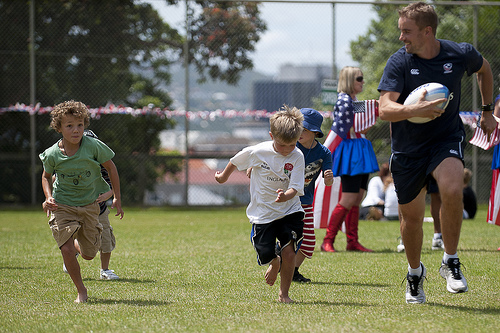
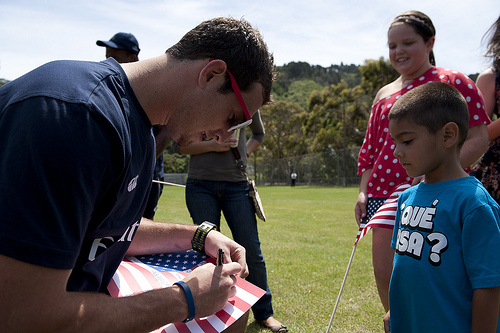


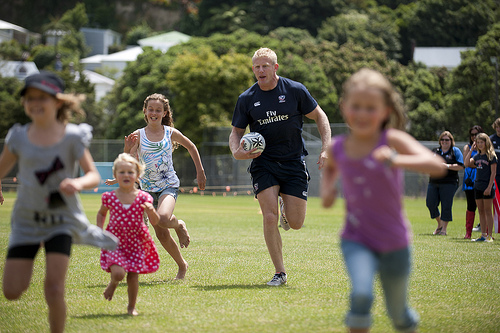









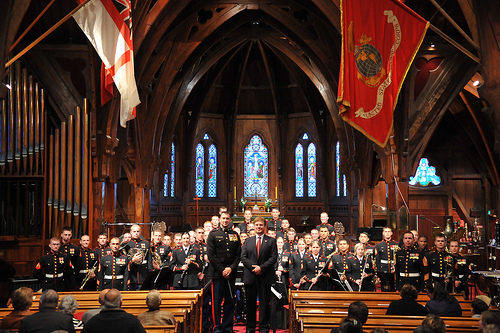


 View my Profile
View my Profile Connect with Wellington
Connect with Wellington Watch our Videos & Subscribe
Watch our Videos & Subscribe Watch our Videos on Vimeo
Watch our Videos on Vimeo Connect on GPlus
Connect on GPlus US Embassy NZ
US Embassy NZ


 Post Entries (RSS)
Post Entries (RSS)

